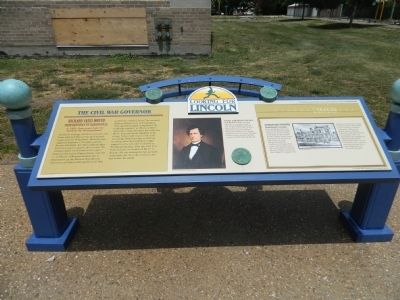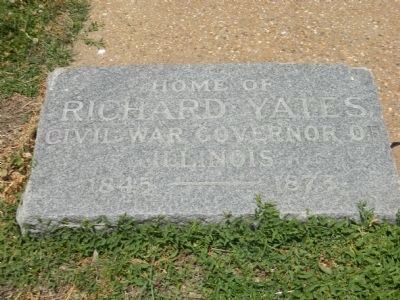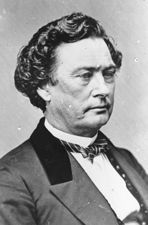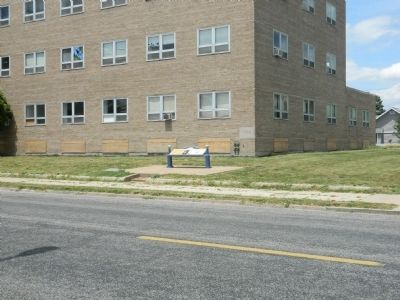The Civil War Governor
Looking for Lincoln
Richard Yates moved from Kentucky to Jacksonville in 1831. Four years later he became the first graduate of Illinois College. Abraham Lincoln and Yates admired Henry Clay and actively supported the Whig Party. Both strongly opposed Stephen A. Douglas and his Kansas-Nebraska Act. Yates claimed that Lincoln's speech against this act was "the strongest speech I ever heard on the subject." Yates served in the Illinois House and the U.S. House of Representatives but is best known as the Radical Republican Governor of Illinois during the Civil War.
Called the "Soldier's Friend," he ensured Illinois soldiers were well equipped. The opposition party complained the uniforms supplied to Illinois soldiers were more expensive than the uniforms the U.S. government supplied to its troops. Yates made trips to visit and encourage Illinois troops, including traveling twice by steamboat to give support to the sick and wounded at Pittsburg Landing. After the Civil War, Yates became a member of the U.S. Senate. He was among the last persons with whom Mr. Lincoln visited on the day before his death.
Both Abraham Lincoln and Richard Yates ran for major offices on the Republican ticket in 1860, Lincoln for President and Yates for Governor. Yates received 1,000 more votes in Illinois than Lincoln. the popularity of Richard Yates with Illinois voters helped his good friend Lincoln carry the State. With Yates as Governor, Illinois was able to raise more troops for the Civil War than any other state.
Governor Yates supported Abraham Lincoln's war policies. Yates decided on his own to send the Illinois militia down to St. Louis to take possession of the arsenal for the Union Army. Peace Democrats in the Illinois legislature strongly disagreed with the Governor's independent action. These Democrats, who controlled the Illinois House of Representatives also refused to support the Governor's attempts to raise troops for the Union Army. Tired of facing constant opposition, Yates took action that no Illinois Governor had taken since: he prorogued the legislature. Although the House Democrats stayed on for two weeks, they could do nothing because Yates had suspended the General Assembly.
Topics and series. This historical marker is listed in these topic lists: Government & Politics • War, US Civil. In addition, it is included in the Former U.S. Presidents: #16 Abraham Lincoln, and the Looking for Lincoln series lists. A significant historical year for this entry is 1831.
Location. 39° 44.055′ N, 90° 13.353′ W. Marker is in Jacksonville, Illinois, in Morgan County. Marker is on E. State Street, on the left when traveling east. Between
Other nearby markers. At least 8 other markers are within walking distance of this marker. Whig Rivals and Friends (about 500 feet away, measured in a direct line); Greene Vardiman Black (about 700 feet away); Lincoln and Jaquess (approx. 0.2 miles away); MacMurray College (approx. 0.2 miles away); Potawatami Indians (approx. 0.3 miles away); a different marker also named Greene Vardiman Black (approx. 0.3 miles away); New Method Book Bindery (approx. 0.4 miles away); 1858 Senate Race Here (approx. 0.4 miles away). Touch for a list and map of all markers in Jacksonville.
Also see . . . Richard Yates. Biographical Directory of the United States Congress 1774 - Present entry. (Submitted on July 19, 2012, by Bill Pfingsten of Bel Air, Maryland.)
Credits. This page was last revised on January 3, 2021. It was originally submitted on July 19, 2012, by Bill Pfingsten of Bel Air, Maryland. This page has been viewed 539 times since then and 8 times this year. Photos: 1, 2. submitted on July 19, 2012, by Bill Pfingsten of Bel Air, Maryland. 3. submitted on November 13, 2020, by Larry Gertner of New York, New York. 4. submitted on July 19, 2012, by Bill Pfingsten of Bel Air, Maryland.



